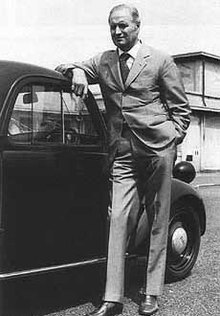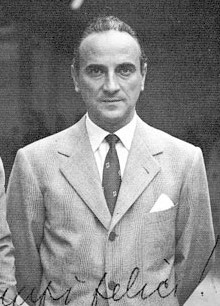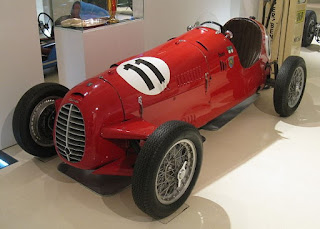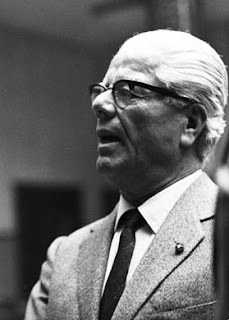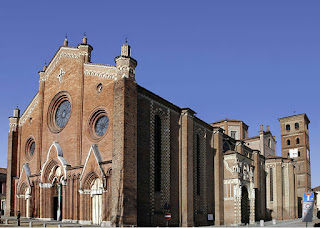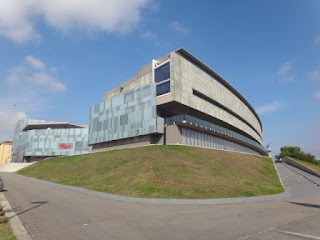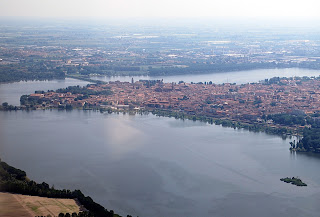Death on track led to mandatory wearing of crash helmets
_(cropped).jpg) |
| Varzi was never seen as a driver who was reckless at the wheel |
Although the sun was shining, an earlier downpour had left parts of the Bremgarten circuit outside Berne very wet and Varzi’s Alfa Romeo 158 was travelling at 110mph when he arrived at a corner that was both wet and oily.
The car spun several times and appeared to be coming to a stop but then flipped over. The helmetless Varzi was crushed beneath the car and died from his injuries at the age of 43.
His death was especially shocking because he was regarded as one of the more cautious drivers. Since beginning his career on two wheels in his teens he had suffered only one major accident, in stark contrast to Nuvolari, whose daredevil tactics led him to have several serious crashes.
Whether Varzi would have survived with better protection is unknown, but his death did prompt motor racing’s governing body, the FIA, to make the wearing of crash helmets by drivers mandatory rather than optional, a ruling many thought was long overdue.
The fearless Nuvolari won 24 Grands Prix but in spite of his more conservative style Varzi still won 17 of his own and his rivalry with Nuvolari has drawn comparisons with that of Ayrton Senna and Alain Prost half a century later.
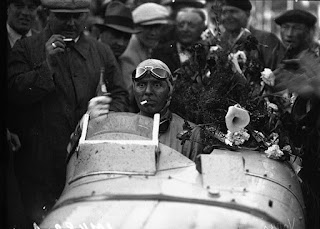 |
| Varzi at the wheel of his Bugatti T51 after winning his duel with rival Tazio Nuvolari at Monaco in 1933 |
Born in 1904 in Galliate, a small town just outside the city of Novara in Piedmont, Varzi was the son of a wealthy cotton manufacturer.
Like Nuvolari, he began his career racing motorcycles, having the financial wherewithal to acquire some of the best machines of the day, such as those made by Garelli, Moto Guzzi and Sunbeam.
He switched to cars in 1928, at first driving Type 35 Bugattis alongside Nuvolari, although he soon decided to go it alone, again taking advantage of his family’s wealth to buy himself a P2 Alfa Romeo, which was a superior car. He chalked up so many race wins in 1929 that Nuvolari felt he needed a P2 of his own.
With a shrewd business brain in addition to his talent behind the wheel, Varzi would not hesitate to switch his allegiance if he felt it would be to his advantage and managed to drive for each major marque during their most successful periods: Alfa Romeo in the late 1920s and mid-’30s, Bugatti in the early 1930s, Auto-Union in the mid-1930s after Adolf Hitler began investing in German motorsport, and Maserati in the immediate pre-war years.
There were numerous races that came down to a straight fight between him and Nuvolari, one example of which was the 1933 Monaco Grand Prix, when the two Italians fought a duel along the narrow streets of the principality that the lead changed on almost every lap until Varzi ultimately broke away to win.
.jpg) |
| Varzi's car rounds a bend in the 1930 Targo Florio, the endurance race in Sicily, which he won |
He would have undoubtedly won more had he not begun what would prove to be a disastrous affair with Ilse Pietsch, the wife of one of his teammates at the Auto Union team, which he joined in 1935.
Apart from the tensions this caused in the Auto Union stable, the relationship had terrible consequences for Varzi’s career. It turned out Ilse Pietsch was addicted to the opioid morphine, a potent painkiller that can induce feelings of intense joy and euphoria when taken in large quantities.
She persuaded Varzi, by then in his early 30s, to sample it himself and he too soon became addicted. His performances suffered as well as his health. By then driving for Maserati, he won the inaugural San Remo Grand Prix in 1937 but little more was seen of him after that and it was not until the Second World War curtailed normal life that he was able to beat his addiction.
No longer with Pietsch, he went back to his former partner, Norma, and they were married. When motor racing resumed, he found success again, driving the Alfa 158. He won races in Argentina, where he decided he would retire once his track career had ended.
A popular figure in Argentina, his name would live on in the Scuderia Achille Varzi, which was set up after his death to enable Juan Manuel Fangio and other Argentine drivers to compete in Europe.
After his death, Varzi’s body was returned to Galliate, his coffin placed on the chassis of a racing car inside the Church of Saints Peter and Paul. His funeral attracted 15,000 people to the large Piazza Vittorio Veneto at the front of the church.
Travel tip:.jpg)
The skyline of Novara is dominated by the 121m
dome of the Basilica of San Gaudenzio
With a population of more than 100,000, Novara is the second largest city in the Piedmont region after Turin. Founded by the Romans, it became an important crossroads for commercial traffic along the routes from Milan to Turin and from Genoa to Switzerland. It was later ruled by the Visconti and Sforza families. In the 18th century it was ruled by the House of Savoy. In 1849, the defeat of the Sardinian army by the Austrian army at the Battle of Novara led to the abdication of Charles Albert of Sardinia and is seen as the beginning of the Italian unification movement. Among the fine old buildings in Novara, which include the Basilica of San Gaudenzio, with its tower-dome designed by Alessandro Antonelli, who also designed Turin's landmark Mole Antonelliana, and the Broletto, a collection of buildings showing four distinct architectural styles, is the Novara Pyramid, which is also called the Ossuary of Bicocca, which was built to hold the ashes of fallen soldiers after the Battle of Novara.
Travel tip:
The impressive Sforzesco Castle is one of the main features
of the historically strategic town of Galliate
Galliate, where Varzi was born, is notable for the Sforzesco Castle, which stands on the town’s central square, the Piazza Vittorio Veneto, opposite the Church of Saints Peter and Paul. Originally built in the 10th century, the castle was rebuilt by Barbarossa in 1168, again by Filippo Maria Visconti in 1413, and by the Sforza family of Milan in the late 15th century. The castle’s exterior retains its Renaissance architectural features, such as the grand entrance tower, the curtain wall and the garden. The castle passed from the Sforza family to Luchino del Maino and was eventually divided and sold to private individuals. The Galliate municipality took over and subsequently restored a part of the castle. Today, it houses the civic library, the Angelo Bozzola Museum of Contemporary Art, and the Achille Varzi Museum, dedicated to the driver.
Also on this day:
1464: The birth of noblewoman Clara Gonzaga
1586: The birth of musician Claudio Saracini
1878: The birth of career burglar Gino Meneghetti
1888: The birth of abstract painter Alberto Magnelli
